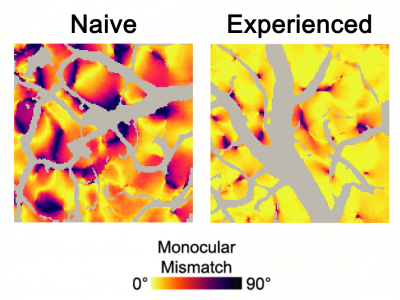
Representations of visual information from each eye are better matched after visual experience. Image credit: Jeremy Chang, Max Planck Florida Institute for Neuroscience.
Neural networks in the visual cortex of the brain do a remarkable job of transforming the patterns of light that fall onto the retina into the vivid sensory experience that we call sight. A critical element of this encoding process depends on neurons that respond selectively to different features in the visual scene. But neurons in visual cortex must also bring together the signals that originate from the left and right eyes to create a single unified binocular representation. Max Planck Florida researchers have conducted a series of experiments that have revealed a critical role for early visual experience in guiding the formation of a unified binocular representation.